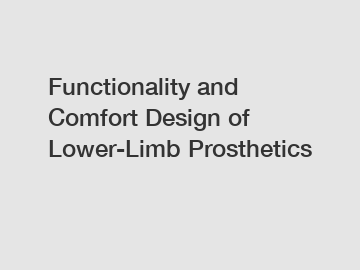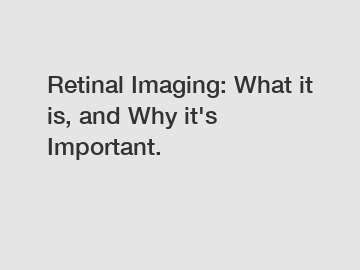A research briefing
Key points
- Rapid tests are usually reliable for long-standing infections, but are sometimes unable to detect recent HIV infections acquired in the past few weeks.
- Many tests are based on older 'second-generation' technology, but a 'fourth-generation' test with better performance is available.
- Like any screening test, a reactive ('positive') result must be confirmed with one or two follow-up tests.
Rapid tests are often referred to as point-of-care tests because rather than sending a blood sample to a laboratory, the test can be conducted and the result read in a doctor's office or a community setting, without specialised laboratory equipment.
Most point-of-care tests require a tiny sample of blood (the fingertip is pricked with a lancet). Other tests require oral fluid (an absorbent pad is swabbed around the outer gums, adjacent to the teeth). They are called 'rapid' tests because the result can usually be given within a few minutes.
Most rapid tests detect HIV antibodies. They are not part of HIV itself, but are produced by the human body in response to HIV infection. In the weeks after exposure to HIV, the immune system recognises some components of the virus and begins to generate HIV antibodies in order to damage, neutralise or kill it (this period is known as 'seroconversion'). These antibodies persist for life.
In contrast, the recommended laboratory tests also detect p24 antigen, a protein contained in HIV's viral core that can be detected sooner than antibodies. Most rapid tests, with the exception of the Determine HIV Early Detect and Determine HIV-1/2 cannot detect p24 antigen.
The accuracy of point-of-care tests is not always equal to those of laboratory tests, especially in relation to recent infection. This is for two main reasons:
- What the test looks for. While one antibody/antigen test is available, the other tests look for antibodies only. Moreover, some can only detect immunoglobulin G (IgG) antibodies, but not immunoglobulin M (IgM) antibodies, which appear sooner.
- The sample taken. Point-of-care tests are usually performed on whole blood taken from a fingerprick. This has a lower concentration of antibodies and p24 than plasma. Samples of oral fluid have a concentration of antibodies that is lower still. (Plasma is the colourless fluid part of blood, separated from whole blood using laboratory equipment. Fingerprick blood is produced by pricking the finger with a lancet, whereas oral fluid is obtained by swabbing the gums.)
As a result, the window period of commonly used rapid tests such as the Determine HIV Early Detect and the INSTI HIV-1/HIV-2 Antibody Test may be one to two weeks longer than for fourth-generation laboratory tests. Other rapid tests, based on older technology, may have longer window periods than this.
Rapid tests can be performed by staff with limited laboratory training. However, reading the test result relies on subjective interpretation, and when the result is borderline, experienced staff give more consistently accurate results. In a setting with low prevalence of HIV, staff may not see enough true positive samples to gain experience in interpreting test results.
It is good practice for test results to be re-read by a second member of staff, within the time frame specified on the test packaging. Organisations using point-of-care tests must maintain strong links with a pathology laboratory that provides support with clinical governance and quality assurance.
When used in a population with a low prevalence of HIV, false positive results can be a problem. The tests always produce a small number of false positive results, but in a setting where very few people have HIV, the majority of apparent positive results will in fact be incorrect. However, as the proportion of people with HIV being tested increases, the true positives start to outnumber false positives. This means it is more appropriate to use point-of-care tests in high-prevalence populations, such as with gay and bisexual men, than in the general population.
All HIV tests need to have reactive results (a preliminary positive result) confirmed with further tests. Most providers tell people who are testing that a negative result is definitive, but that a reactive result simply indicates the need for further laboratory testing.
The accuracy of different rapid tests
A wide range of point-of-care tests have been manufactured in many countries, but only a few of them have been subject to rigorous, independent evaluations, and even fewer are marketed in the UK. Research on HIV tests is only occasionally published in medical journals. Informally, laboratory professionals may have insights into which tests perform best.
It is important to verify that any test used is CE marked. This should mean that the test conforms to European health and safety legislation, although it does not necessarily mean that test performance has been independently evaluated.
There are variations in accuracy from one test to another, with some older tests that are not usually marketed in the UK having a sub-optimal sensitivity and specificity. However, evaluations by the World Health Organization of several rapid diagnostic tests that either have CE marks or are approved by the US Food and Drug Administration (FDA), indicate that most are extremely accurate. The key measures of accuracy are sensitivity (the percentage of results that are correctly positive when HIV is actually present) and specificity (the percentage of results that are correctly negative when HIV is not present).
Of note, in the World Health Organization data below, most tests were performed with samples of plasma or serum. However, the tests are less sensitive when testing whole blood sampled from a finger prick. There is one test (the OraQuick Advance Rapid HIV-1/2) which can also test oral fluid samples in addition to blood.
Also, the figures on sensitivity are based on samples from people who had chronic (not recent) HIV infection, but the tests are less accurate in cases of recent infection, especially those which only detect immunoglobulin G (IgG) antibodies.
Test
Detects
Sensitivity
Specificity
OraQuick HIV-1/2 Rapid HIV-1/2 (OraSure)
IgG
99.1%
100%
HIV 1/2 STAT-PAK (Chembio)
IgG
99.5%
100%
Determine HIV Early Detect (Abbott)
IgG + IgM + p24
100%
99.4%
Determine HIV-1/2 (Abbott)
IgG + IgM + p24
100%
98.9%
Uni-Gold HIV (Trinity)
IgG + IgM
99.8%
Featured content:Indocyanine Green | Chemical Properties, Uses and Side ...Retinal Imaging On the CheapLower Limb Prostheses - Medical Clinical Policy BulletinsRetinal Imaging: Purpose, Procedure, Risks, ResutlsEverything You Need To Know To Find The Best medical beds for saleHow to Remove Surgical Staples [+ Free Cheat Sheet]How often should prosthetic liners be replaced?
Contact us to discuss your requirements of Tb Rapid Test. Our experienced sales team can help you identify the options that best suit your needs.
99.9%
INSTI HIV-1/HIV-2 Antibody Test (bioLytical)
IgG + IgM
100%
99.7%
SD BIOLINE HIV-1/2 3.0 (Standard Diagnostics)
IgG + IgM
99.8%
99.8%
DPP® HIV 1/2 Assay (Chembio)
IgG
99.9%
99.9%
There is one rapid, point-of-care test that looks for both antibodies and p24 antigen, in a similar way to antibody/antigen laboratory tests. The Determine HIV-1/2 Ag/Ab Combo was originally introduced in , with an updated version that is now called the Determine HIV Early Detect launched in Europe in (the older version is still marketed in the United States and in some parts of the world).
The promise of having a 'fourth-generation' point of care test that detects p24 antigen is that the window period should be shortened. However, several studies found that although the older version of this test performed well in respect of established HIV infection, its ability to detect recent HIV infection did not match that of laboratory antibody/antigen tests. The test was quite insensitive to p24 antigen, making it only marginally better than antibody-only tests in detecting acute (recent) infection.
"All HIV tests need to have reactive results (a preliminary positive result) confirmed with further tests."
The handful of studies published so far on the newer version suggests it has better performance in acute infection, although it still does not match that of antibody/antigen laboratory tests. The Determine HIV Early Detect's sensitivity during acute infection has been variously estimated to be 28% (in three African countries), 54% (France), 65% (the Netherlands) and 88% (UK).
An analysis pooled the results of 18 separate studies in which a point-of-care test (including Determine, OraQuick, UniGold and INSTI) was compared with a more sensitive laboratory test. Compared with fourth-generation laboratory tests, the estimated sensitivity of the point-of-care tests was 94.5% (95% confidence interval 87.4-97.7) and specificity was 99.6% (99.4-99.7). Compared with RNA (viral load) tests, the estimated sensitivity was 93.7% (95% confidence interval 88.7-96.5) and specificity 98.1% (95% CI: 97.9-98.2).
Sensitivity was higher in nine studies conducted in African countries than in the nine studies conducted in the United States and other wealthy countries. This is likely to be due to different populations coming forward for screening. Whereas 4.7% of those testing positive in African studies had acute (recent) HIV infection, this figure rose to 13.6% in the high-income countries.
Glossary
antibody
A protein substance (immunoglobulin) produced by the immune system in response to a foreign organism. Many diagnostic tests for HIV detect the presence of antibodies to HIV in blood.
point-of-care test
A test in which all stages, including reading the result, can be conducted in a doctor's office or a community setting, without specialised laboratory equipment. Sometimes also described as a rapid test.
window period
In HIV testing, the period of time after infection and before seroconversion during which markers of infection are still absent or too scarce to be detectable. All tests have a window period, the length of which depends on the marker of infection (HIV RNA, p24 antigen or HIV antibodies) and the specific test used. During the window period, a person can have a negative result on an HIV test despite having HIV.
p24
An HIV antigen that makes up most of the HIV viral core. High levels of p24 are present in the blood during the short period between HIV infection and seroconversion, before fading away. Since p24 antigen is usually detectable a few days before HIV antibodies, a diagnostic test that can detect p24 has a slightly shorter window period than a test that only detects antibodies.
reactive
Because of the possibility that a positive result from a single HIV test is, in fact, a false positive, the result is described as 'reactive' rather than 'positive'. If the result is reactive, this indicates that the test has reacted to something in the blood and needs to be investigated with follow-up tests.
A study in five African countries found that the performance of point-of-care tests was sub-optimal. Samples from some countries were more likely to have false positive results than others, suggesting that tests need to be locally validated and that some tests may be more accurate in relation to some HIV subtypes than others. The researchers found a high number of false positive results, whereas false negative results were relatively rare. The specificities of the First Response HIV Card Test 1'2.0, INSTI HIV-1/HIV-2 Antibody Test, Determine HIV-1/2 and Genie Fast HIV 1/2 were all between 90 and 95%. The findings confirm that the diagnosis of HIV should not be based on results from a single HIV rapid diagnostic test. A combination of HIV tests, and more specifically an algorithm (sequence) of two or three different tests, is required to make an HIV-positive diagnosis. This is recommended in testing guidelines.
All HIV tests need to have reactive (preliminary positive) results confirmed with confirmatory tests. A particular challenge healthcare workers have with rapid tests is how to communicate a reactive result to the person testing (who may be present while the result is being read) and explain that supplementary tests are needed. These problems are less frequently faced with laboratory testing ' a large enough blood sample was taken to allow for it to be tested several times and for uncertainties in the diagnosis to be resolved.
Window periods of rapid tests
The window period refers to the time after infection and before seroconversion, during which markers of infection (p24 antigen and antibodies) are still absent or too scarce to be detectable. Tests cannot reliably detect HIV infection until after the window period has passed. All tests have a window period, which varies from test to test.
Delaney and colleagues estimated window periods for a handful of rapid tests in a study. However, all these estimates were based on testing blood plasma. In practice, tests are usually done on fingerprick blood (obtained by pricking the finger with a lancet) and the window period is likely to be several days longer.
The fourth-generation Determine HIV-1/2 Ag/Ab Combo was estimated to have a median window period of 19 days (interquartile range 15 to 25 days). This indicates that half of all infections would be detected between 15 and 25 days after exposure. Ninety-nine per cent of HIV-infected individuals would be detectable within 43 days of exposure.
The third-generation INSTI HIV-1/HIV-2 test was estimated to have a median window period of 26 days (interquartile range 22 to 31 days). This indicates that half of all infections would be detected between 22 and 31 days after exposure. Ninety-nine per cent of HIV-infected individuals would be detectable within 50 days of exposure.
Several second-generation tests, such as OraQuick Advance Rapid HIV 1/2, Clearview HIV 1/2 STAT-PACK and SURE CHECK HIV 1/2 were evaluated. The median window period was 31 days (interquartile range 26 to 37 days). This indicates that half of all infections would be detected between 26 and 37 days after exposure. Ninety-nine per cent of HIV-infected individuals would be detectable within 57 days of exposure.
UK guidelines take a cautious approach, describing the window period for all rapid, point-of-care tests as 90 days.
If you are testing with a rapid, point-of-care test and you are concerned that you may have been exposed to HIV during the test's window period, you could also be tested with a fourth-generation laboratory test. This requires a blood sample, taken through a needle from a vein in the arm, which is tested in a laboratory using a more sensitive test. The results should be available after a few days.
Situations in which rapid tests may not be accurate
Performance of rapid tests is poorer in a number of situations. Results may not be accurate.
- In cases of recent HIV infection, during the test's window period.
- In people with diagnosed HIV who are taking HIV treatment. These tests are not a reliable way to confirm that you still have HIV infection.
- In people who are taking pre-exposure prophylaxis (PrEP) or post-exposure prophylaxis (PEP). If you acquire HIV, you may have a delayed antibody response, extending the window period.
What do the test results mean?
There are three possible test results:
1) Negative (may also be described as 'non-reactive'). The test did not find any evidence of HIV infection. You probably don't have HIV (so long as you aren't testing in one of the situations described in the last section).
2) Reactive (often incorrectly described as 'positive' by manufacturers). The test assay has reacted to a substance in your blood. This does not necessarily mean that you are HIV positive. It means you need to take more tests to confirm the result. These extra tests are best done at a healthcare facility where they have access to the most accurate HIV testing technologies.
3) 'Indeterminate', 'equivocal' or 'invalid'. The test result is unclear. Another test needs to be done.
If you want to learn more, please visit our website hbsag elisa test.









Comments
Please Join Us to post.
0